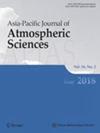Variability and Influencing Factors of the Convective Boundary Layer Height Over the Tibetan Plateau
Abstract
Convective boundary layer height (CBLH) is an essential parameter of the boundary layer climatology, which is associated with the intensity of turbulence mixing. Radiosonde data derived from the "Sino-Japanese Center for Cooperation on Meteorological Disasters" (JICA) during three intensive observation periods in 2008 in Gerze (32.17°N, 84.03°E) were used to verify the applicability of ERA5 reanalysis data in the Tibetan Plateau (TP). Thus, the spatiotemporal variations in the CBLH (boundary layer height from 08:00 to 20:00) and the contributions of the influencing factors during different monsoon seasons in various regions of the TP were investigated using the ERA5 data (1983–2022). The results indicate that variable characteristics in the CBLH derived from radiosonde data are basically consistent with that from ERA5 during the three observation periods. The monthly-averaged CBLH showed only one peak in the eastern region during the full development of the CBL (14:00–18:00), while two peaks were shown in the western region. The CBLH over the TP exhibited a decreasing trend during the monsoon period while the CBLH in the eastern region showed an increasing trend during the post-monsoon period. Wind speed at 10 m height was a key factor influencing the CBLH during the non-monsoon period, while surface sensible heat flux considerably influenced variations in the CBLH during the monsoon period.

 求助内容:
求助内容: 应助结果提醒方式:
应助结果提醒方式:


